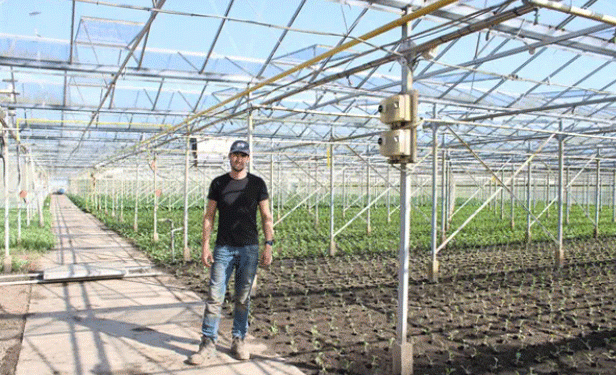In the ever-evolving world of horticulture, young and ambitious farmers like Pim van Wingerden face both unique opportunities and significant challenges. At just thirty years old, Pim finds himself at a crossroads as the greenhouse he inherited from his father, located on 3e Barendrechtseweg, is set to be demolished early next year as part of a housing development project. This has prompted Pim to seek a new location to continue his business, Growing Healthy Vegetables, where he specializes in leafy greens such as bok choy and purslane.
Pim’s situation highlights a growing trend in the Dutch horticultural industry: as more greenhouse operations shut down or transition to other uses, finding suitable land for agricultural expansion becomes increasingly difficult. Despite the hurdles, Pim remains committed to finding a new location that meets his needs—a slightly larger greenhouse, ideally between 1.5 to 2 hectares, and preferably with a house nearby so he can stay close to his crops.
For Pim, soil quality is paramount. Since transitioning from growing turnip greens to bok choy three years ago, he has seen steady demand from buyers. Bok choy, which he cultivates year-round, provides a stable foundation for his business. Although purslane is now only grown during the summer months, Pim values the crop’s seasonal demand. However, the pressure of continuous soil use without rest is weighing on his mind. His late father often reminded him of the importance of allowing the soil to rest, a principle Pim hopes to uphold by expanding his greenhouse to alleviate some of the pressure on his current land.
The challenge, however, is finding the right property in a region like Barendrecht-Ridderkerk, where many older growers are still holding onto their greenhouses, choosing to continue farming rather than selling. Rental options are scarce, and while Pim has rented additional space in the past, he knows that renting limits his ability to invest in the future of his business.
The recent years have been a test of resilience for Pim. Since taking over the farm following his father’s passing five years ago, he has navigated the challenges of the COVID-19 pandemic, the energy crisis, and severe weather events, including a damaging windstorm that shattered hundreds of greenhouse windows. Fortunately, Pim’s reliance on gas for heating is minimal, which helped him weather the energy crisis better than many other growers.
Industry insiders have repeatedly emphasized to Pim that he holds a unique position in the greenhouse sector. As a young grower with experience and ambition, he represents a new generation in an industry where ground-based leafy vegetable cultivation is not often pursued by younger farmers. His determination to continue growing, despite the pending demolition of his greenhouse, is a testament to his passion for horticulture.
While Pim continues his search for the perfect location, he remains committed to supplying fresh vegetables to his customers. Even as the demolition of his current greenhouse looms, he has secured temporary rental space for January and February, ensuring that his production does not come to a complete halt. As he puts it, “I hope I don’t have to hit the pause button, but I had to provide clarity to my buyers.”
As we walk out of the greenhouse and Pim points to a freshly painted gas line, it’s clear that despite the challenges, he is not ready to give up. Pim van Wingerden is a grower with a vision for the future, and he’s determined to make that future a reality.
Pim van Wingerden’s story reflects the broader challenges facing the horticultural industry in the Netherlands, where land scarcity and the aging farming population are shaping the future of greenhouse agriculture. Despite these obstacles, Pim’s resilience and ambition showcase the determination of young farmers to continue growing and innovating in an ever-changing landscape. His journey underscores the need for industry support and creative solutions to ensure that the next generation of growers can thrive.










